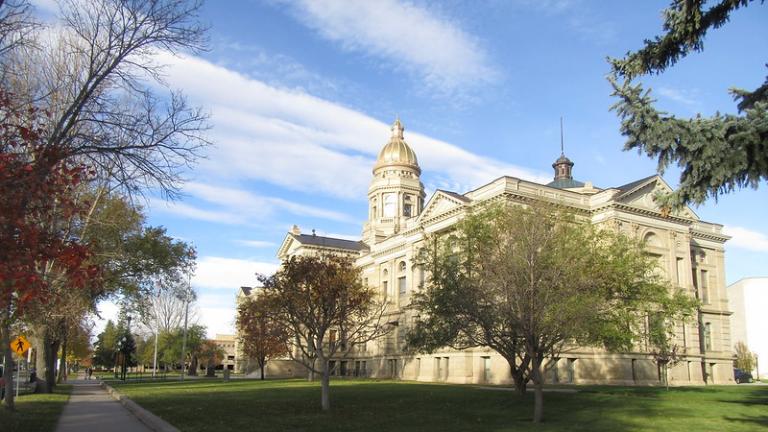
Members of Wyoming’s government and public university met with MIT researchers to discuss climate-friendly economic growth.
The State of Wyoming supplies forty percent of the country’s coal, used to power electric grids across the country. The production of coal and other energy resources contributes over half of the state’s revenue, funding the government and many of the social services—including K-12 education—that residents rely on. With the consumption of coal in a long-term decline, decreased revenues from oil and natural gas, and growing concerns about carbon dioxide (CO2) emissions, the state is actively looking at how to adapt to a changing marketplace.
Recently, representatives from the Wyoming Governor’s Office, University of Wyoming School of Energy Resources, and Wyoming Energy Authority met with faculty and researchers from the Massachusetts Institute of Technology (MIT) in a virtual, two-day discussion to discuss avenues for the state to strengthen its energy economy while lowering CO2 emissions.
“This moment in time presents us with an opportunity to seize: creating a strong economic future for the people of Wyoming while protecting something we all care about—the climate,” said Wyoming Governor Mark Gordon. “Wyoming has tremendous natural resources that create thousands of high-paying jobs. This conversation with MIT allows us to consider how we use our strengths and adapt to the changes that are happening nationally and globally.”
The two dozen participants from Wyoming and MIT discussed pathways for long-term economic growth in Wyoming, given the global need to reduce carbon dioxide emissions. The wide-ranging and detailed conversation covered topics such as the future of carbon capture technology, hydrogen, and renewable energy; using coal for materials and advanced manufacturing; climate policy; and how communities can adapt and thrive in a changing energy marketplace.
The discussion paired MIT’s global leadership in technology development, economic modeling and low-carbon energy research, with Wyoming’s unique competitive advantages: its geology that provides vast underground storage potential for CO2; its existing energy and pipeline infrastructure; and the tight bonds between business, government and academia.
“Wyoming’s small population and statewide support of energy technology development is an advantage,” says Holly Krutka, executive director of the University of Wyoming’s School of Energy Resources. “Government, academia and industry work very closely together here to scale up technologies that will benefit the state and beyond. We know each other, so we can get things done and get them done quickly.”
“There’s strong potential for MIT to work with the state of Wyoming on technologies that could not only benefit the state, but also the country and rest of the world as we combat the urgent crisis of climate change,” says Bob Armstrong, director of the MIT Energy Initiative, who attended the forum. “It’s a very exciting conversation.”
The event was convened by the MIT Environmental Solutions Initiative as part of its Here & Real project, which works with regions in the U.S. to help further initiatives that are both climate-friendly and economically just.
“At MIT, we are focusing our attention on technologies that combat the challenge of climate change—but also, with an eye toward not leaving people behind,” says Prof. Maria Zuber, MIT Vice President for Research.
“It is inspiring to see Wyoming’s state leadership seriously committed to finding solutions for adapting the energy industry, given what we know about the risks of climate change,” says Laur Hesse Fisher, director of the Here & Real project. “Their determination to build an economically and environmentally sound future for the people of Wyoming has been evident in our discussions, and I am excited to see this conversation continue and deepen.”
For media inquiries, contact Laur Hesse Fisher: lfi@mit.edu.





